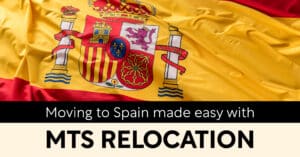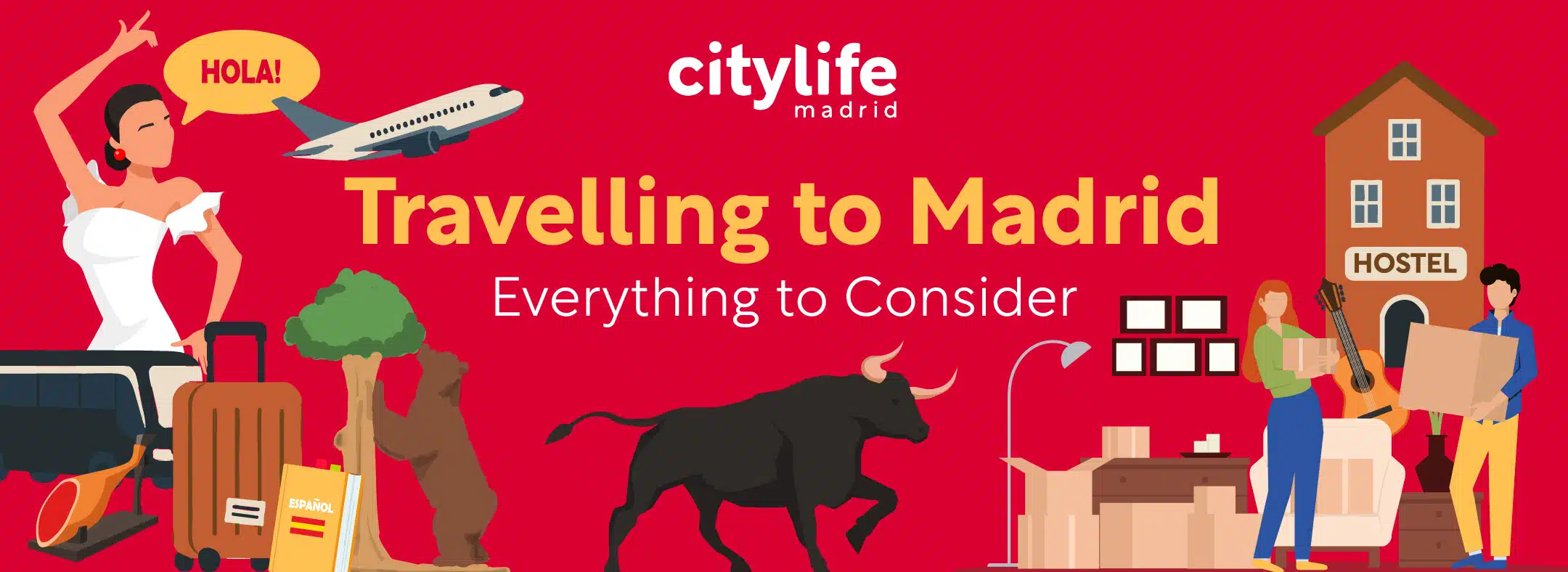
If you’re planning a semester abroad, an internship, a work stint, or just a long-awaited adventure, travelling to Madrid is a choice you won’t regret. Spain’s vibrant capital is bursting with energy, history, and opportunities—and if you’re a young international, there’s no better place to immerse yourself in culture, meet people from around the world, and create unforgettable memories.
But let’s face it—travelling to Madrid involves more than just booking a flight. From understanding the city’s unique rhythm and weather to knowing what to pack, how to ship your luggage, and where to stay, there’s a lot to prepare. That’s exactly why we’ve created this all-in-one guide.
This article is packed with helpful tips, insider advice, and essential info to make your journey smoother, smarter, and more enjoyable. Simply keep reading to soak in all our useful insights about Spain’s Capital, or use our content overview to skip directly to the topics you need help with!
If you’re planning to visit more of Spain and want to learn about the best regions to visit and when, top monuments to see, festivals to experience and more, take advantage of our incredible list of things to do in Spain! Once done, you’ll be on your way to becoming a true Spain expert!
1. About Madrid – Culture, Climate & More
1.1 A Brief Intro to Madrid
Spain’s capital, found at the very center of the Iberian Peninsula, is a vibrant, cosmopolitan city with inhabitants out and about at every hour of day and night. Madrid city centre itself counts more than 3 million inhabitants, with more than 6 million in the whole province. It’s the most important city in the financial and industrial sectors of Spain and home to over 10 major universities that serve as education centers for Spaniards, Europeans and people from all over the world. The local currency is the Euro (€), making travel and spending convenient for visitors from across the EU.
Madrid is also sitting at one of the highest altitudes of any European capital (roughly 650 metres). The city is surrounded by the Jarama and Manzanares rivers, as well as the Guardarrama mountain chain.
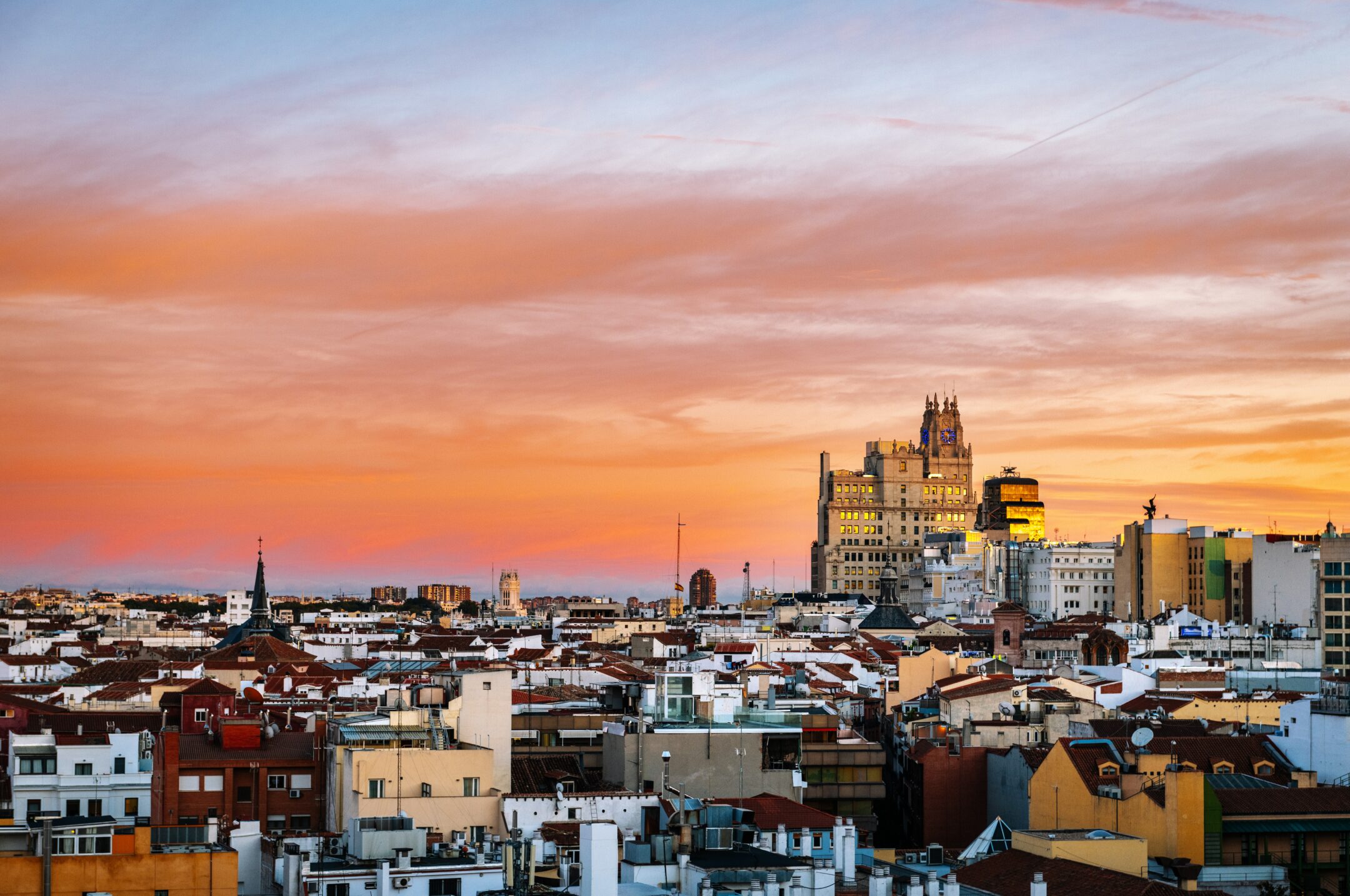
The city is home to the largest Royal Palace in the world and other beautiful landmarks like Plaza Mayor, El Prado Museum and Real Madrid’s Bernabeu Stadium. Each neighborhood of Madrid is distinct and unique, from funky-alternative Malasaña to chic and high-end Salamanca. For a complete breakdown of all neighbourhoods in Madrid’s city centre, check out our article The Amazing Neighbourhoods of Madrid.
1.2. Madrid’s Culture – A Breakdown

Madrid’s culture has been shaped by centuries of history and artistic expression, all set against a vibrant metropolitan backdrop. As Spain’s capital, the city stands incredibly proud with its grand architecture, historic neighborhoods, and world-class museums like the Prado, Reina Sofía, and Thyssen-Bornemisza. But Madrid’s culture can also be found in its streets and plazas. From colorful murals to passionate flamenco shows and live music in local bars.
Madrileños are famously sociable, embracing a lifestyle that balances work, fun and community. Life is lived in plazas, parks and on rooftops, where people spend their free time eating and talking at all hours of the day (and night). The city’s food scene is constantly evolving, blending traditional Spanish recipes with international influences and creative twists. And when it comes to celebrating, few places do it like Madrid—festivals, street fairs, markets, and concerts fill the calendar, celebrating everything from Catholic traditions to music and fashion.
To learn more about Spanish language, famous recipes, holidays and more, visit our selection of articles about Spanish Culture.
Curious to know what it costs to visit a city like Madrid? Make sure to check out our comprehensive guide to the cost of living in Madrid so you can map our your budget for things like transportation, food & drink, supermarket runs and more!
1.3. About Madrid’s Continental Climate
Madrid has a continental climate, meaning it experiences hot summers, cold winters, and relatively low humidity throughout the year. With a daytime annual average of 19°C, the city is drier than many other parts of Spain and Europe.
Summers in Madrid are typically hot and dry, with temperatures often ranging from 30°C to 40°C. In contrast, winters are cold, crisp, and windy, averaging between 0°C and 10°C. Frost is common, and there’s the occasional snowfall—so be sure to pack a warm jacket and sturdy shoes if you’re visiting in the colder months.
Spring and fall are considered the most pleasant times of year, offering mild temperatures and a great balance between sunshine and outdoor comfort. These seasons are especially popular with tourists, though Madrid remains lively year-round.
Rain is typically an irregular thing in Madrid, but chances increase dramatically during the months of October/November and March/April.
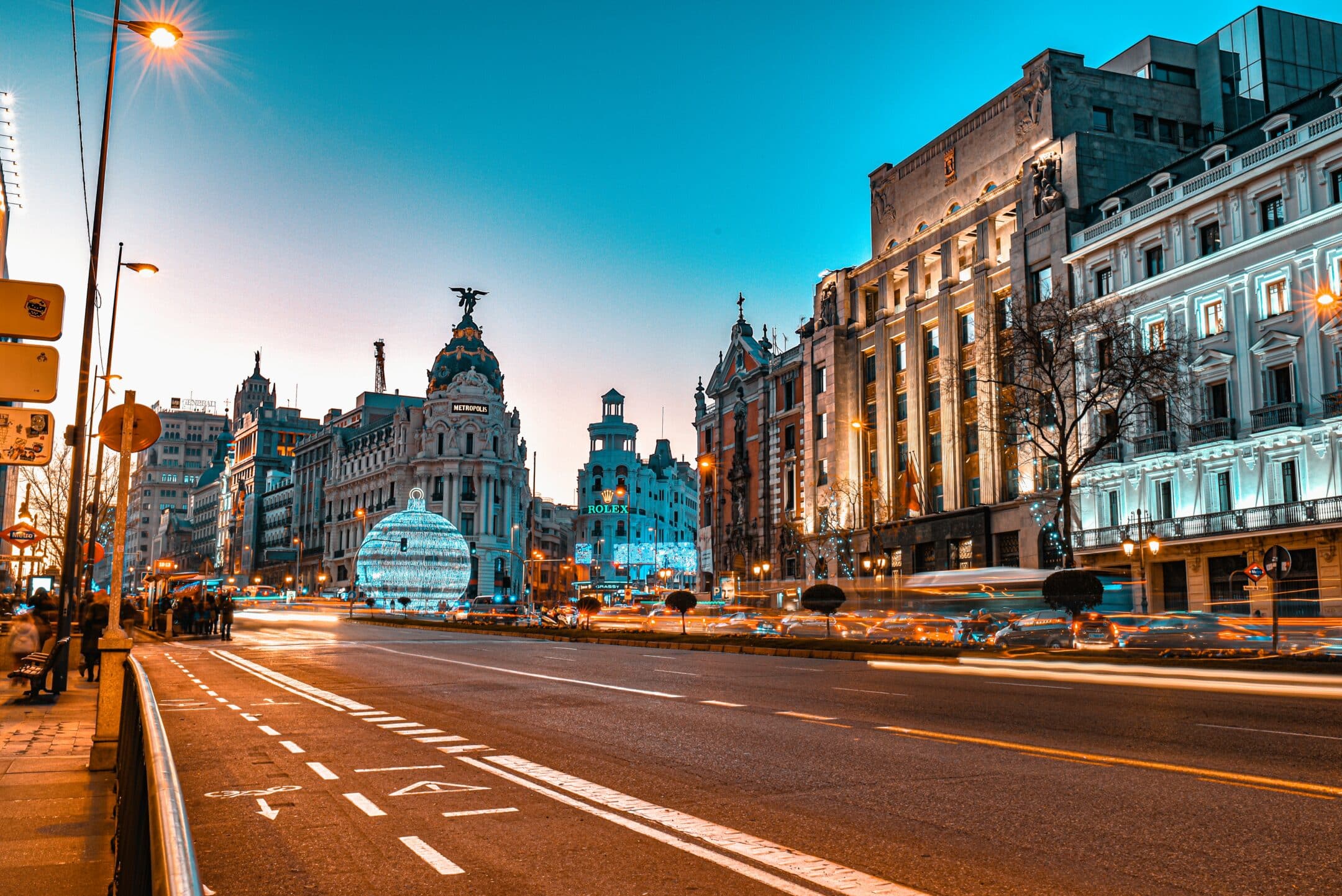
Skip ahead to our chapter about packing for your trip to Madrid to get the best tips on packing light, smart and in line with Madrid’s style!
2. Moving to Madrid – The Essentials
If you’re planning to travel to Madrid for a short-term or a long-term period, we’re sure you’ve thought about the city’s public transport system, finding housing, getting a Spanish SIM, potential Spanish immigration topics, insurance options and many more. Luckily, Citylife specializes in all these topics and we’ve outlined everything you need to know in easy to follow guides across our website! Scroll through our many articles below to see everything our experts have to share about Housing, Metro, SIM card and make sure you’re all set!
Finding the Best SIM Card for your Time in Spain
Connect Instantly with Lebara eSIMs
Lycamobile – Best Pay as You Go SIM Card Deals for Spain & Europe
Getting Around Madrid – Your Guide to Madrid’s Public Transport System
Citylife Housing – The Ultimate Living Experience in the Heart of Madrid!
Healthcare in Spain – Your Guide to Safely Navigating the Spanish Healthcare System
The Ultimate Guide to Student Housing in Madrid
Your Step by Step Guide to Apply for a NIE or TIE in Madrid 2025
Spain Immigration Explained – What documents do you need to study, work or live legally in Spain?
Best Health Insurance in Spain for International Students & Expats for 2025
Moving to Spain Made Easy With our Friends at MTS
Connectivity Mobile – eSIMs and Pay as You Go SIM Cards in Spain
Relocate to Madrid with our Support Package
The Ultimate Guide to Best Banks for Students & Expats in Spain
3. Packing Hints & Tips
Packing for your travel to Madrid is more than just throwing clothes in a suitcase — it’s about preparing for an entirely new lifestyle. Whether you’re coming for a semester abroad, a new job, a quick visit or an open-ended adventure, what you pack will depend on the season, the length of your stay, and your personal needs. This chapter will help you figure out what to bring, what’s easy to buy once you arrive, and, more importantly – what you can leave behind.
3.1. Choice of Luggage Based on Your Needs
The bag (or bags) you bring with you when you travel to Madrid can make or break your travel experience as well as you everyday life. Make the right choice for you with the following things in mind. If you already know what kind fo bags you’ll be bringing with you, jump ahead to our next chapter about what to pack inside them!
Main Luggage Options:
- Rolling suitcase: Ideal for organized packing and longer stays, but keep in mind the airline limitations/costs, cobblestoned streets and stairs in older buildings.
- Large backpacking bag: Great for moving around easily, especially if you’re traveling around Spain or Europe before settling down.
- Duffle bag: Can be convenient, but tough to carry long distances if fully packed.
Important: Avoid bringing too many bags with you. You might not have a lot of storage space at your accommodation!
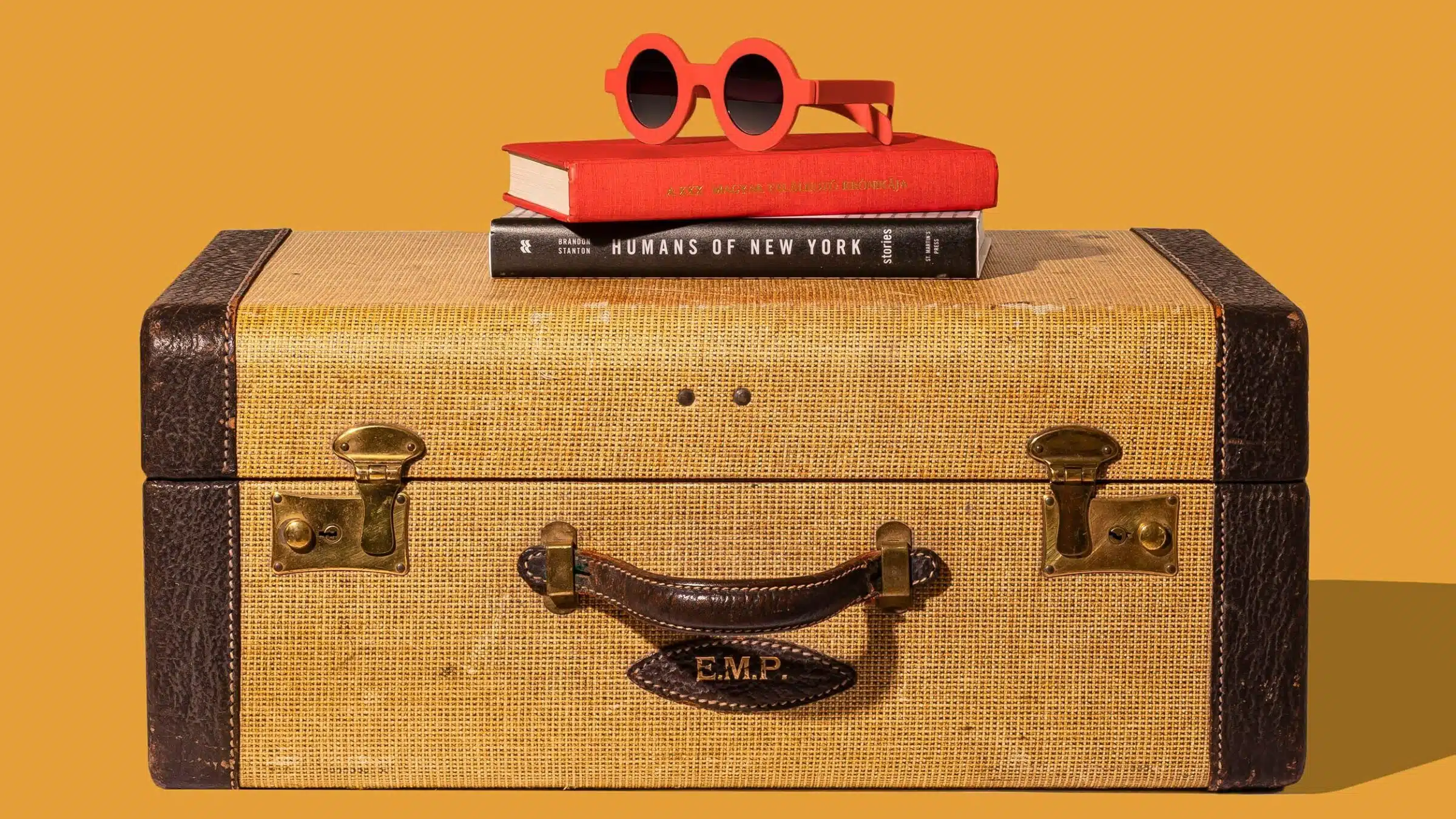
Planning to pack a lot but don’t want to bring it on the plane with you? Skip ahead to look into luggage shipment, clearing Spanish customs and luggage storage in the city!
3.2. Packing Diverse, Versatile Clothing
Madrid can be home to some extreme temperatures. From a dry, hot season that can last from May to September, to colder, unpredictable weather from October to February. Dressing for the weather while also keeping up with the trendy fashions of the city can be harder than you think – but not impossible. Follow our tips below and you’ll be just fine!
Packing Layers

If you’re packing for a trip that will cover multiple seasons and want to save space in your luggage, you’ll want to pack clothing that is good for all climates.
Instead of packing all your big bulky winter clothes, think about how you can eventually layer certain items to keep you warm and remove layers when it gets warmer.
Paired with warmer accessories (scarves, gloves, coat) or cooler items (linens, hats) you’ll be able to adapt to all of Madrid’s weather comfortably!
Neutral & Reusable

Madrid is a city where transitioning from day to night is something you’ll end up dealing with more often than you ever thought!
Packing a lot of neutral colours that can be mixed and matched into several outfits is key to saving space in your luggage while adding variety to your options.
Keep in mind that beyond work or school, you’ll probably want to enjoy Madrid’s stylish cocktail bars and vibrant nightlife — so be sure to pack a few colorful statement pieces that can instantly elevate a casual outfit for a night out.
The Right Footwear

Madrid is a walking city as well as a stylish one. So if you have limited space in your luggage, we recommend only bringing shoes that you know can take you around the city without causing issues (aka leave the heels at home!)
That said, many restaurants, clubs, offices and workspaces will not allow sneakers, tennis shoes or casual sandals. So make sure you’re also prepared for a dressier setting if needed.
Important: Madrid winters can be quite cold and you’ll definitely want to have a pair of boots on your side.
Leave Space for Shopping

Madrid is home to some incredible shopping. From mid-range shops like Zara, H&M, Mango and Stradivarious, to fantastic vintage shopping and high-end brands. So we have no doubt you’ll do some shopping during your time here.
With that in mind, save yourself some stress and remember that you won’t really need to bring everything from home with you.
You can buy anything you need at reasonable prices right here. And if we’re honest, you’ll be buying things you don’t need as well!
Tip: There are several sales seasons (rebajas) in Madrid throughout the year. Make sure to keep an eye out!
Thinking of bringing cash with you? Madrid is mostly card-friendly, but having €100–€200 in small bills for your arrival is useful if you need quick access to your money. ATMs are widely available, but be sure to check your bank’s fees and the currency conversion before relying on them.
Read up on banking in Spain for more info on how to make things easier (and cheaper) for you during your time in Madrid.
3.3. Packing Toiletries

The truth is that you’ll find everything you could possibly need right here in Madrid. With shops like Clarel, Druni, Primor and local pharmacies, you can simply buy whatever you need when you need it. So we recommend only packing the basics to get you through the first few days. While picking up the rest from your local shop.
That said, if there are some products from your home country that you prefer (medicated creams or brands that aren’t available in Spain) we recommend packing a sufficient amount to get you through your stay so you don’t have to rely on shipping anything over.
Important: Not all beauty products are available in Spain and its truly not worth the hassle of going through Spanish customs for a face cream or a bottle of shampoo. With that in mind, do some research on Spanish equivalents that you can use while here or pack enough to last the duration of your stay.
Popular international companies that could be great options while in Spain:
- Nivea – mid-level brand for body and skincare. Available at most supermarkets.
- Garnier – haircare, skincare and light cosmetics. Available at most supermarkets.
- L’Oréal Paris – skincare, makeup and hair dye. Available at most “perfumerías”.
- Cien – high quality mid-level brand for body, skin and hair care. Available at Lidl.
3.4. Medications & Prescriptions

The European Union has much harsher restrictions on medications and specific ingredients than in North America or other regions. This often means that certain meds that you might be able to buy from your local drug store might not even exist Spain.
What’s more, in Spain all medications – even something as simple as ibuprofen or cough syrup – can only be sold by speaking to a pharmacist, even if they don’t require a prescription.
With that in mind, if you are someone who requires a specific medication, you need to be vigilant in researching if it’s available here in Spain. If it is, check with your doctor about making a prescription that will be accepted here. If it isn’t, make sure you have enough to cover you during your stay.
Common medications that might not be available in Spain and what to use instead:
- Tylenol/Acetaminophen – The alternative in Spain is known as Paracetamol.
- Advil – The brand doesn’t exist in the EU, but its main ingredient – Ibuprofen – does.
- NyQuil/DayQuil – Frenadol and its variations are the best alternatives when you have cold and flu symptoms.
- Benadryl – There are many allergy-relieving meds in Spain. Like, Reactine, Clarityn, Zyrtec, Rupafin.
- Pepto-Bismol – for stomach issues look into Almax (antacid), Salvacolina (for diarrhea), Biodramina (for nausea).
Packing the Right Electronics

As a start, the two-pronged, 230V, 50Hz voltage plugs/sockets are standard across the EU. So if you’re from the European Union, you won’t need to worry about packing things like adapters and voltage converters.
If you are from outside the EU you’ll need to make sure you bring an adapter and a voltage converter that will ensure your devices work. Alternatively, you can simply buy larger things like hair tools, fans, and smaller kitchen appliances here at stores like Media Markt, FNAC and even on Amazon Spain.
Aside from your standard electronics like phones, charging cables and laptops we recommend packing the following useful items:
- Power bank – helpful when you travel over night.
- Power bar/extension cable with sockets from your country – you can use one EU adapter while plugging in several items from your home country.
- Kindle or Tablet – keeping all your books in one place will save lots of space.
- Back up phone – some people prefer to travel with a secondhand mobile device to reduce the pressure of it getting lost or stolen.
4. Luggage Shipment & Storage
The next challenge you’ll face when travelling to Madrid for a long-term stay will be handling the logistics of your belongings. Both the items you’ll be bringing with you and the items you might need to send over after your arrival. Whether you’re waiting on a delivery from home, planning to ship boxes internationally, or simply need a secure place to store your luggage during a weekend trip, understanding how these systems work in Spain can save you time, money, and frustration!
Below you’ll find articles covering three key topics to help make your experience smoother: how to retrieve packages held by Madrid customs, which shipping companies are the most trusted for domestic and international deliveries, and where to find convenient and affordable luggage storage in the city. Click on the article that fits your needs best and get the practical info you’ve been looking for!

International Shipping Spain – Our Top Recommendations
How to Get your Package out of Spanish Customs in Madrid
Luggage Storage in Madrid – How it Works
5. Travelling to Madrid – Airport Transport Options
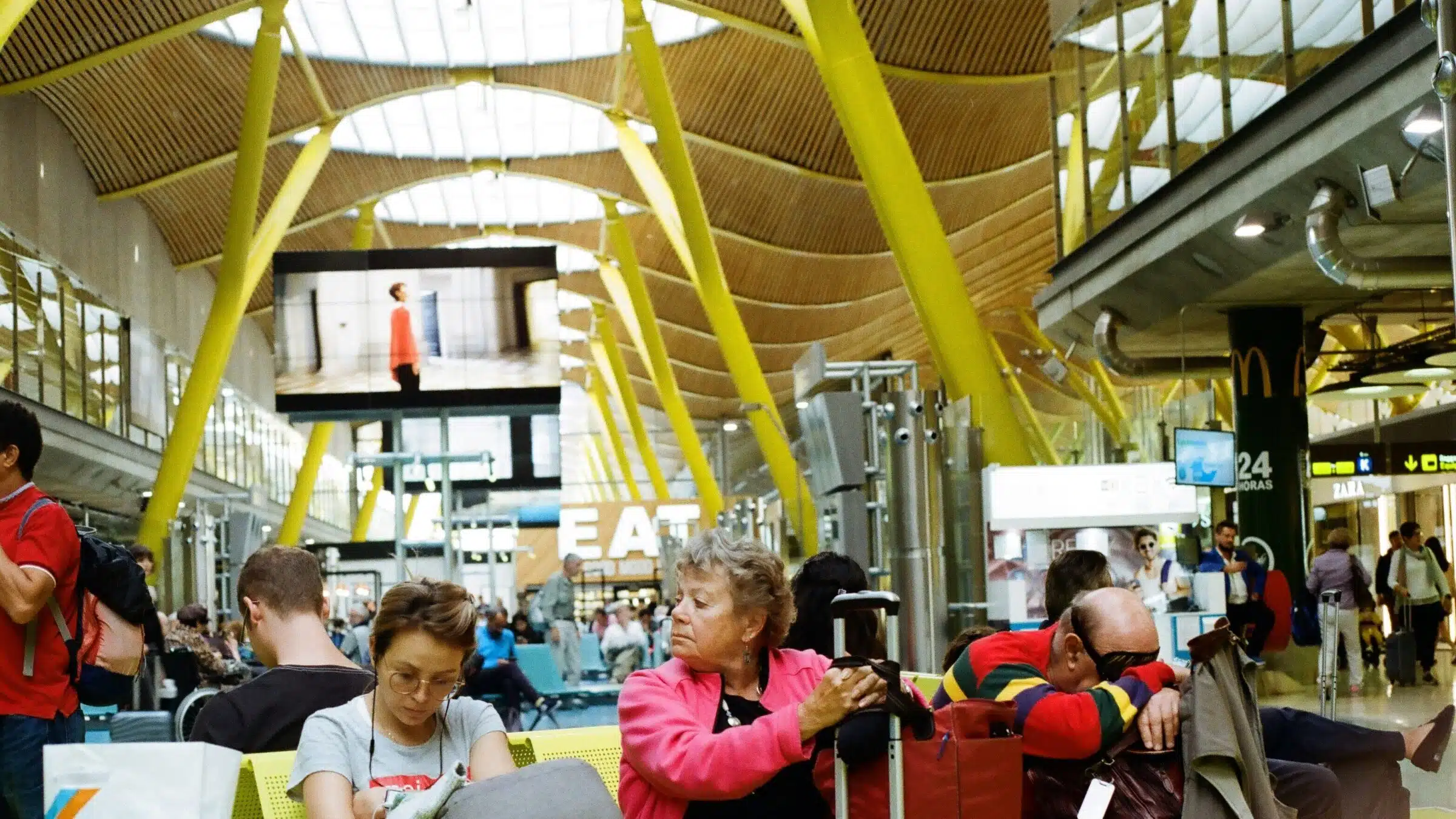
Adolfo Suárez Madrid–Barajas Airport – simply known as Barajas to locals – is one of the most accessible airports in Europe due to its proximity to the city centre and easy to navigate terminals. Located just 12 kilometers from the city center (roughly a 25 minute drive), it’s surprisingly quick and easy to reach no matter where you’re staying in Madrid. Whether you’re catching the metro, hopping on the airport express bus, grabbing a taxi, or booking a private transfer, getting to and from the airport is straightforward and stress-free.
To compare all the available options and choose the best one for your arrival or departure, check out our complete guide to Madrid airport transportation.
6. Where to Stay in Madrid – Your Accommodation Options
Madrid offers a wide variety of accommodation options to suit different budgets, travel styles, and lengths of stay. In this chapter we’re breaking down the best places to stay in Madrid, where to book them, and some top-rated options for international travelers. If you’re travelling to Madrid for a long term stay and would like to know more about finding proper accommodation for that time, make sure to check out our comprehensive guide to housing in Madrid.
Hostels
Social, Central & Budget-Friendly
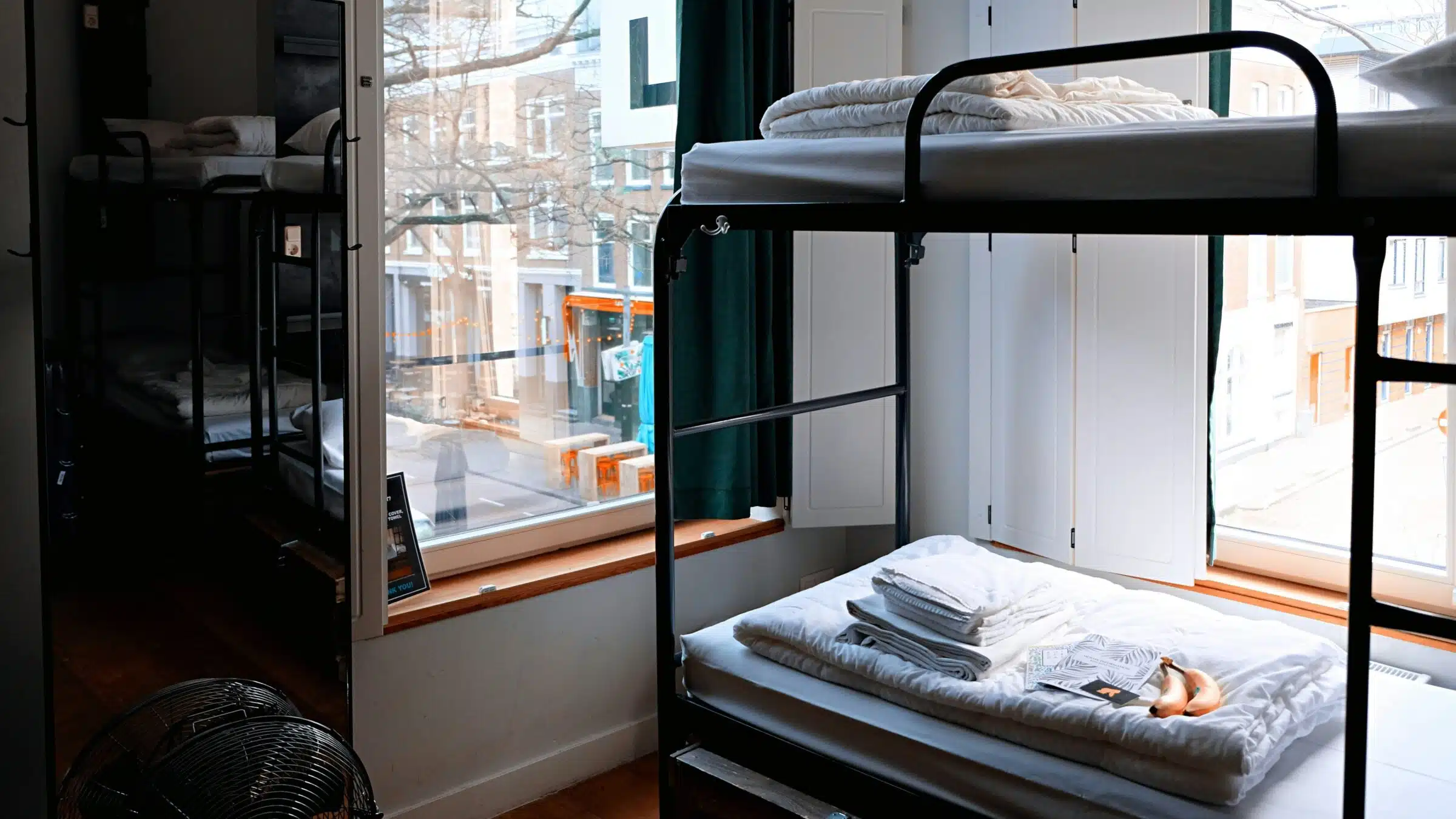
Hostels are ideal for solo travelers, students, or groups looking for affordable stays with a social vibe. Most hostels in Madrid offer dorm-style rooms, but many also have private rooms available.
Best Platforms to Book Hostels in Madrid:
Top Hostels in Madrid:
- Top Choice: Onefam Sungate
- Generator Hostel
- MadHostel
- The Hat Madrid
Tourist Apartments
Live Like a Local

Ideal for longer stays, apartments offer more space, kitchen access, and a more local experience. Great for students, digital nomads, or anyone staying a week or more.
Best Platforms to Book Tourist Apartments in Madrid:
Top Tourist Rental Agencies in Madrid:
Hotels
The Ultimate Comfort

Hotels are a good choice for those wanting privacy and convenience. While Madrid has luxury hotels, there are also many affordable boutique and mid-range options ideal for international travelers.
Best Platforms to Book Hotels in Madrid:
Top Central & Affordable Hotels in Madrid:
- Room Mate Hotels (4*)
- Hotel Cortezo (3*)
- Dear Hotel (4*)
- Catalonia Hotels (4*)
Couchsurfing & Homestays
Staying with Locals

For travelers looking for a cultural exchange, personal connection, or ultra-budget stay. Couchsurfing typically involves staying with locals for free, while homestays are paid arrangements offering a room in a local’s home
Best Couchsurfing & Homestay Platforms:
- Couchsurfing
- Your Family in Madrid (Homestays)
- Citylife Housing Request Form (Homestays)
- Facebook Forums (Both)
- WhatsApp Forums (Mostly Couchsurfing)
7. Additional Info for Travelling to Madrid
In this final chapter we’ve outlined some additional topics that might be useful for someone planning to travel to Madrid! From important tips on avoiding theft from pick-pockets to what kind of apps you can download that will make your trip as fun as possible. As well as information on the EU Roaming system and what you have to keep in mind when bringing your mobile phone to Spain.
For more information on what kinds of things you can do in Madrid during your stay, make sure to check out our ultimate Madrid bucket list, our tips on exploring Madrid for less, Citylife’s trip packages and cultural activities and Nightlife Madrid’s incredible party calendar!












